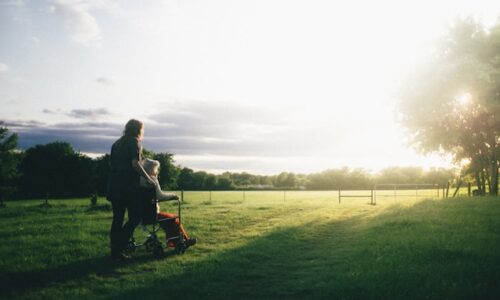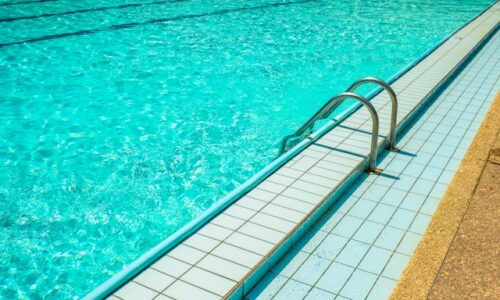
Exploring Aquatic Vegetation Management
Aquatic vegetation growth in District lakes and ponds can reduce water quality, interfere with recreational uses and impact property values. Nuisance growth of aquatic vegetation can be reduced through management techniques.
Definition
Invasive aquatic plants grow (usually densely) to the detriment of native vegetation and ecosystem function. They can disrupt wildlife habitats and block water flows through rivers, canals, and District water control structures.
A well-managed aquatic plant population is beneficial to the environment. It provides shelter and food for wildlife, prevents bank erosion, and ties up nutrients supporting microscopic green algae growth. Aquatic plants provide bass cover and habitat in fishing ponds while swimming ponds need dense weeds to maintain clear water and keep swimmers safe.
Excessive aquatic plant growth can also impact property values, impede recreation and negatively affect fish and wildlife habitats. Identifying desirable from nuisance plants is critical to a successful management program. The District uses a combination of cultural, biological, and mechanical controls on District lands and public waterbodies to control aquatic vegetation. These include herbicides (chemical), harvesting (mechanical), and triploid grass carp, a weed-eating fish.
Causes
There are many causes of aquatic vegetation problems. They may be due to nutrient enrichment from agricultural runoff, feedlots, septic systems, residential lawn fertilizer, and decomposing plant material. Most often, they are caused by non-native invasive plants like hydrilla, water hyacinth, and water lettuce.
Dense aquatic vegetation growth can impede access to the shoreline and interfere with recreational activities such as fishing, boating, and swimming. It can also affect the balance of fish species and detract from the lake ecosystem.
Aquatic vegetation management in lakes or ponds should be done early in the season before weeds mature and begin to produce seeds. If too much vegetation is killed at once, it can tie up oxygen in the water, which reduces available oxygen for other aquatic life forms. This is one of the main reasons for summer fish kills. Late-season chemical treatments can also cause fish kills if they are not properly timed. For example, applying herbicides in late fall can result in low oxygen levels in the water from decomposing plant material.
Control
Aquatic vegetation plays a vital role in lake and pond ecosystems. It fashions nursery, cover, and food for aquatic wildlife and provides a natural buffer against runoff. However, excessive growths detract from recreational opportunities, reduce the clarity of a body of water and impede fish spawning. Many methods exist to control unwanted plants, including dredging, mowing, hand pulling, mechanical harvesters, cutting with booms and draglines, and chemical (herbicide) treatments. Using the appropriate method depends on factors such as the plant type, the water depth, and whether it is flowing or static.
It is recommended that herbicide applications be made in early summer to limit the amount of decomposing vegetation that ties up oxygen for other aquatic life, particularly fish. If herbicides are used, special care must be taken to read and follow product label recommendations.
Prevention
Invasive aquatic plants can prevent oxygen from reaching fish and other wildlife, completely block waterways, or get caught in boat motors. They also disrupt native ecosystems and damage District water control structures. The best way to manage nuisance vegetation is prevention. Proper site selection and construction of new ponds, fertilization management, and periodic draw-downs can prevent overabundant growth.
Preventing weed problems is easier than solving them once they occur. It is important to properly identify weed species and consider economic, recreational, ecological, and other factors when selecting a treatment option.
Aquatic plants are an integral part of any lake or pond ecosystem. They provide food for fish and other aquatic wildlife, improve pond and lake water quality, stabilize shorelines, and reduce erosion rates. However, excessive weeds can prevent recreation, limit fishing opportunities and negatively affect property values. The use of herbicides can be effective in the management of weeds.





